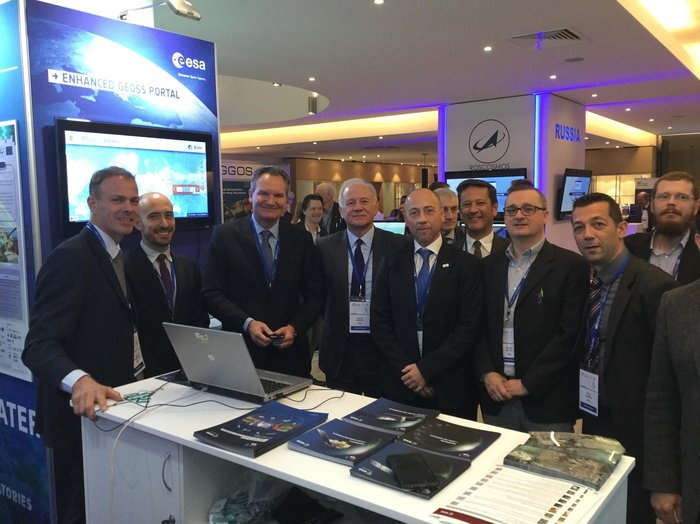
A new and improved version of the GEOSS web portal is ready to provide users with faster, more intuitive access to the ever-growing wealth of diverse Earth observation resources worldwide.
The portal is the primary access point to the Global Earth Observation System of System (GEOSS), connecting Earth observation data users to over 200 million resources such as satellite-based data, aerial and in-situ data, models, algorithms and web-pages.
The enhanced GEOSS portal was unveiled this week during the 13th annual Group on Earth Observations (GEO) plenary meeting in Saint Petersburg, Russia.
One of the main challenges of GEOSS is that it must connect a vast amount of data amongst a large variety of users that includes decision and policy-makers, scientists and data analysts, as well as value-adders and citizens.
The new portal permits users to use simple and multicriteria searches to refine results according to their needs, as well as filter results for the type of data they want to consult, such as from a particular satellite mission. For example, users searching for cloud-free Sentinel-2 imagery over a particular area can find what they need within a few clicks.
“It’s never been easier to access the satellite and in situ data and information in GEOSS,” said Barbara Ryan, the Director of the GEO Secretariat.
“As we work with existing and new providers, we can be proud to direct them to the new look and feel of the GEOSS portal, where an intuitive interface means their data can be discovered and accessed with ease.”
Improving the portal was made possible by portal public–private partnerships with geolocation software developers Google Maps, what3words and ESRI.
ESA has been the official GEOSS portal provider since 2012, in cooperation with the Italian National Research Council’s Institute for Atmospheric Pollution Research (CNR-IIA) and the GEO Discovery and Access Broker. In response to user needs, work to improve the portal began in 2016.
“The fruitful cooperation with ESA is important and benefits the whole GEOSS community, in particular for better informed decision-making,” said Nicola Pirrone, director of CNR-IIA.
ESA plans to continue developing the portal with CNR-IIA and the GEO Secretariat to render it more user-friendly. Activities will also be coordinated with other ESA initiatives like the Thematic Exploitation Platforms and the latest European Earth observation ground segment evolution strategy.
“This cooperation between ESA and the EC in GEO is of strategic importance, and I expect that such a key European contribution to GEO will maximise the benefits of Earth observations to society through effective partnerships within GEO,” said Robert-Jan Smits, GEO co-chair and Director General of the European Commission General Directorate for Research and Innovation.
http://www.esa.int/Our_Activities/Observing_the_Earth/Refurbished_GEOSS_portal_now_online
